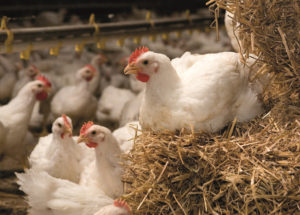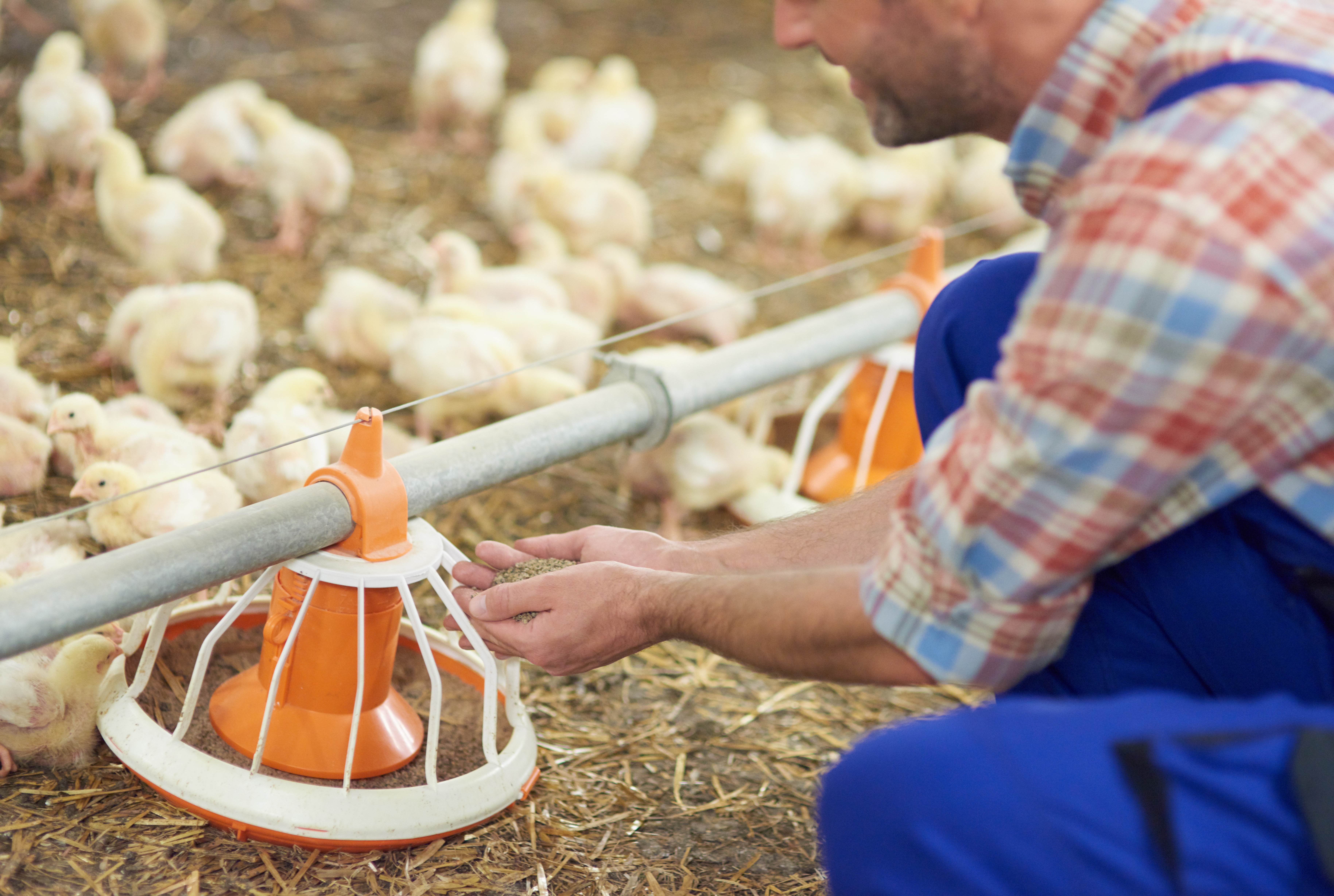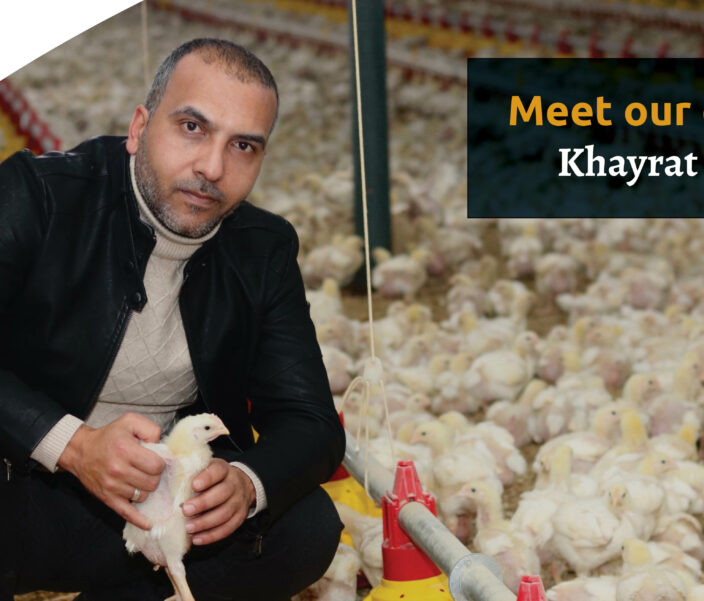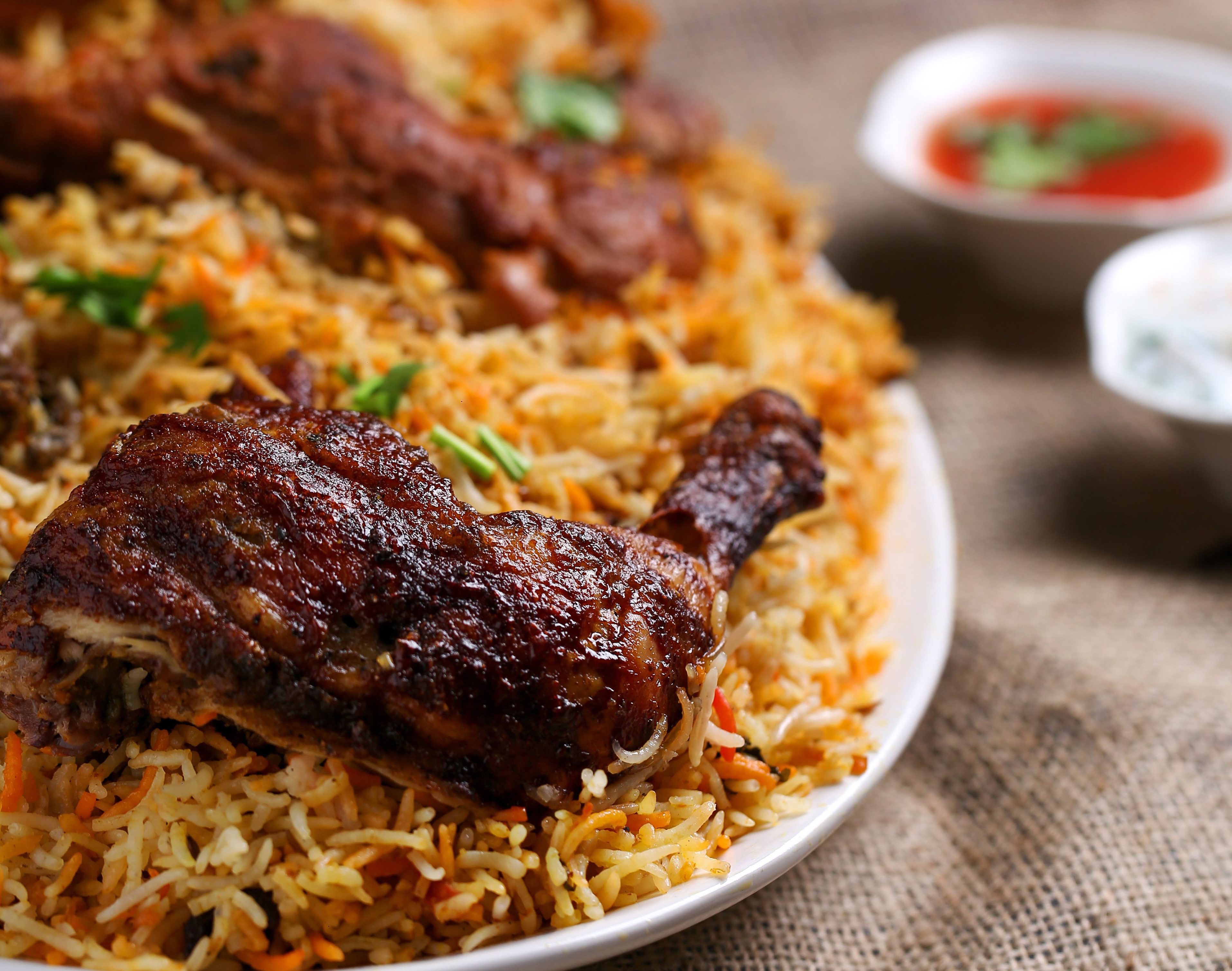By Jan Vervloesem (Poultry Category Manager)
Globally, poultry meat consumption is increasing but, in more developed countries, this growth is slowing down. Not by competition from other animal protein sources but by impending market saturation and other non-animal protein sources becoming available. Besides the new alternatives, climate and environmental concerns contribute to slowing the market growth of poultry meat.
Quality is defined differently depending on where the buyer is on the food chain. Processors focus on different technical aspects of meat quality than the consumer. A common industry standard is provided by EFSA (European Food Safety Authority). They classify meat quality characteristics into nine groups: safety, functional, nutrition, sensory, aesthetical, convenience, ethical, authenticity, and origin. Though all these standards are important, a processor needs to know there is an inherent progression of quality standards from the consumer.
Variance in the market demand
In growing markets, safety, nutrition, function, convenience, ethical, and sensory are the first standards of quality, followed by aesthetics, authenticity, and origin. Food safety is already embedded in the regulations of most countries (i.e. Salmonella, Campylobacter, and antibiotic monitoring). Authorities are focused on safety issues, but the approach can be very different from country to country. Generally, worldwide, if Salmonella is present in meat or egg products, it will be blocked and/or destroyed. So, globally, producers work to protect food safety while also monitoring costs during the raising and processing of broilers.
In mature markets close to the saturation level, meat producers concentrate more on cost-price, ethics, and differentiation to safeguard their market position and profitability. Here, the consumer’s point of view on quality can be defined as “the composite of those characteristics that differentiate individual units of a product and which have a significance in determining the degree of acceptability of that to the user (Groom, 1990). It is quite clear when talking about food quality, from the consumer point of view, that the quality of the broiler and meat needs to be well known and well defined to match consumer expectations (Figure 1).

Raising the bar on quality
In differentiating themselves from the competition, producers seek to provide higher quality products and gain economic value. This is especially relevant in the countries with higher incomes where consumers are willing to spend more for added value. These products typically focus on nutritional values, like eggs enriched with vitamin E or high in omega-3 & omega-6. In addition to differentiation, ethical characteristics also become more significant in mature markets. Examples are concepts related to the production processes for the consumption of eggs or broilers. Besides specific ideas related to religion, these preferences refer mainly to animal welfare and sustainability (free-range eggs, slow-growing broilers, GMO-free-fed animals, etc.). Here is where producers seek consumer validation using terms like “raised antibiotic-free”.
Meat quality & application
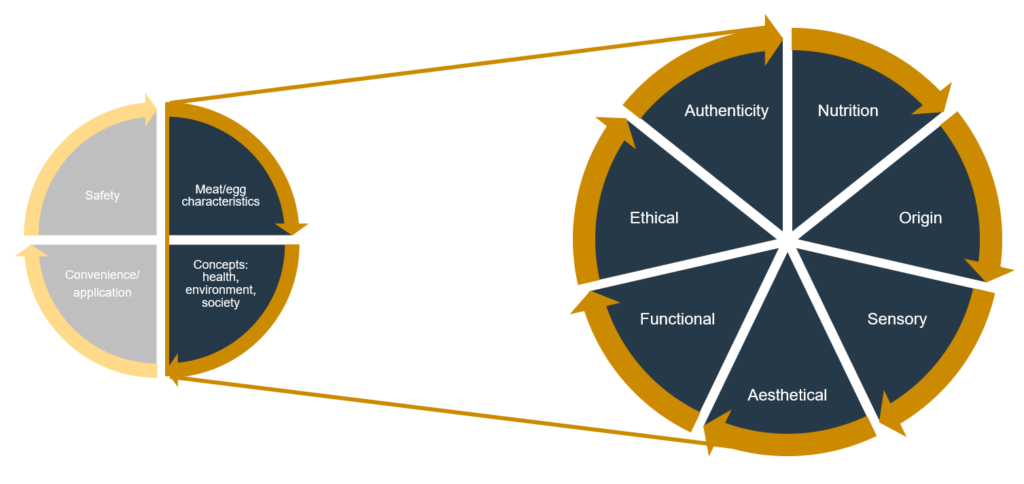
A more complex evaluation of meat quality is the sensory parameters. There are several parameters to determine and monitor, many are complimentary to food safety or ethical issues. Therefore, with many subjective preferences, this method is not a question of ‘yes’ and ‘no’ regarding if it raises quality (Figure 3). Most of the different parameters in the sensory category have a range of values that help determine how the consumer judges the meat product according to personal taste or smell. Of course, many of the sensory parameters are subjective (flavor, taste, tenderness,..) but quantifying the parameters is necessary in order to optimize the customer’s acceptance. In order to improve meat quality, it is necessary that the main parameters are identified, quantified, and measured to understand what is relevant to the customer. It is only by doing so that flaws can be recognized and improved.
| Safety | Residues | Bacterial contamination | Shelf life | Freshness | ||
| Sensory: Visual apperance | Color of skin & meat | Marbling (intramuscular fat) | Water holding capacity | Breast myopathis | ||
| Sensory: Palatability | Flavor | Taste | Smell | Firmness | Texture | Tenderness |
| Aesthetical | Conformation | Carcass defects | Bruises & haemorrhages | Missing parts | Skin tears | Cleaniliness |
| Convenience | Packaging | Utilisation mode | ||||
| Ethical: Production process | Sustainability | Religious slaughtering | Animal welfare | |||
| Functional | Health claims | Labelling | Fat binding capacity | |||
| Authenticity | Broiler (e.g. slow growing breed) | Turkey | Duck | |||
| Origin | Traceability | Regional | ||||
| Nutrition | Nutritional value | Chemical composition |
United goal for quality
When considering the sensory category, as well as the aesthetical category, the broiler grower, nutritionist, and processor need to work closely together to minimize the losses that reduce the value of the end product. It starts with proper flock management to ensure the health and condition of the broilers. Avoiding wet litter and heat stress are examples of ways broiler growers can easily contribute to improving the meat quality. Proper catching, handling, and loading techniques also help protect the quality of live broilers. This requires experience and good communication. Digital technology can contribute to encouraging communication and unity among the parties involved.
Agrimprove is focused on supporting protein productivity, working to increase efficiency to stimulate the quantity and improve meat quality. Agrimprove realizes this by closely working with the producers, nutritionists, and processors to understand and collaborate for their needs and success.
Your Agrimprove Expert
THIS MIGHT ALSO INTEREST YOU
Ready for improvement? Try one of our suggested solutions with a proven added value.
